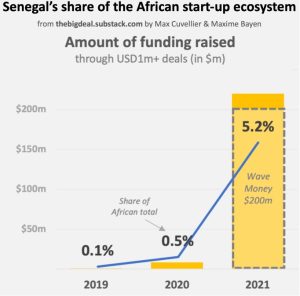HANS STOISSER
The End of Development Aid – We have to talk about it!
John Mc Arthur, economist and a Visiting Fellow with the Brookings Institution, has done an interesting calculation. In his blog post How Much Aid is Required to End Extreme Poverty? he came to the conclusion that required funds to meet basic services for the extreme poor of the world have dropped from 450 bn USD in 1990 to 200 bn USD in 2010. And those requirements will drop further. This is his graph:
Figure 1: Rough estimation of ODA amounts required to meet basic services for extreme poor

(Graph from John McArthur)
Required fund are decreasing because more and more people are getting out of poverty. To quote a recent UN-Report on the Post-2015 Development Agenda
“The 13 years since the millennium have seen the fastest reduction in poverty in human history: there are half a billion fewer people living below an international poverty line of $1.25 a day. Child death rates have fallen by more than 30%, with about three million children’s lives saved each year compared to 2000. Deaths from malaria have fallen by one quarter.”
In my understanding this has become true because of increased global exchange and specialisation – more globalized value chains, more networked information systems, the spread of knowledge society, the spread of communication society, and the like.
We are witnessing a big success story which we are not always aware about. Global economic development has become possible! What we take for granted today actually wasn’t so two or three decades ago.
The end of development aid?
John Mc Arthur continues “The end of extreme poverty should not be confused with the end of aid.” Yes, I agree.
But what will come first? The end of development aid or the end of poverty?
To my understanding, aid has to come down first. Because as long as aid processes are in place, sustainable and viable structures to tackle poverty simply aren’t possible.
Why should the administration of a country like Mozambique reach out to the countryside when official donor agencies and NGOs are competing to do so? Why should local doctors go out to the real poor when international NGOs are already there? How can you possibly build sustainable local health structures or maintenance structures for infrastructures when aid funded organizations are all around?
More often than not donor agencies and NGOs are doing good and decent jobs. But they do this on the basis of aid money. Aid money doesn’t require reciprocates in return. No reciprocates mean that there is no incentive to build local structures. Even when local governments have the best intentions to tackle poverty, as long as there is no price to pay no own resources will be allocated and viable structures can’t emerge.
There is an inner contradiction between aid and sustainability. Both simply can not come together. – The more donors and aid workers actually talk about sustainability and aid effectiveness, the more they prove this contradiction true. It’s like hunting the moon.
Good intended aid always targets to make itself redundant.
I am afraid, but we have to talk about a phasing out of development aid.
And this has to be part of the post-2015 development agenda.




In your argument you picture aid generally as substituting
services that could as well be delivered by local public and private actors. We
know that the situation is not as simple as that: As for public provision, your
example of “the government reaching out to the countryside”, there
need to be funds, competence and political will. All of these elements are
usually scarce in less developed countries and all of these elements are being
addressed by state-of-the art aid systems – through budget support, along with
training and the support of civil society. As for private provision – your example
of health care for the poor – the argument that the market can effectively fulfil
the task, does not even hold true for the most developed countries. Of course,
the concept of clinics run by NGO’s looks like old-school development aid, but
the European experience shows that with the emergence of a sound regulatory
framework and a mature market, such institutions (think of hospital run by
clerical institutions) end up well integrated. So, here again, it is
institution-building and regulatory systems that aid should focus on. Possible
that by focussing on these issues the total volume of external aid would actually
come down.
Only when services of public or private actors are financed either by public funds generated through taxes or by “customers” in the case of private markets we can talk of sustainability. Continuous unilateral aid finance has always been the main obstacle for developing sustainable viable structures.
Actually, this argument shouldn’t be confused with the question who should provide a certain service. If it is the public sector or the private market who is more effective is a totally different question.
But I agree, funds, competence and political will are necessary ingredients. However, I think this has become much less a problem. More and more countries have developed modern financial systems and their economies are constantly growing, so they generate increasing tax income. It is also already the second or third generation of well trained people coming into management positions, so competence shouldn’t be an obstacle either. And for the same reason, although dependent on the specific situation, political will is generally there.
But as long as aid financed donor agencies or NGOs are intervening, it is not rational for local actors to try to substitute them. Therefore, the risk increases that aid is “crowding-out” local initiatives and hence impedes sustainable structures.
The end of development aid? In our world full of conflicts, wars and unrest? You are not serious, are you?
Conflicts, wars and unrests need “humanitarian aid” which in my thinking is different from “development aid”. As long as natural disasters, wars and “failed states” exist humanitarian aid is of utmost importance. By contrast, development aid deals with the longer term aspect of developing sustainable structures and hence by its very nature has to make itself redundant.